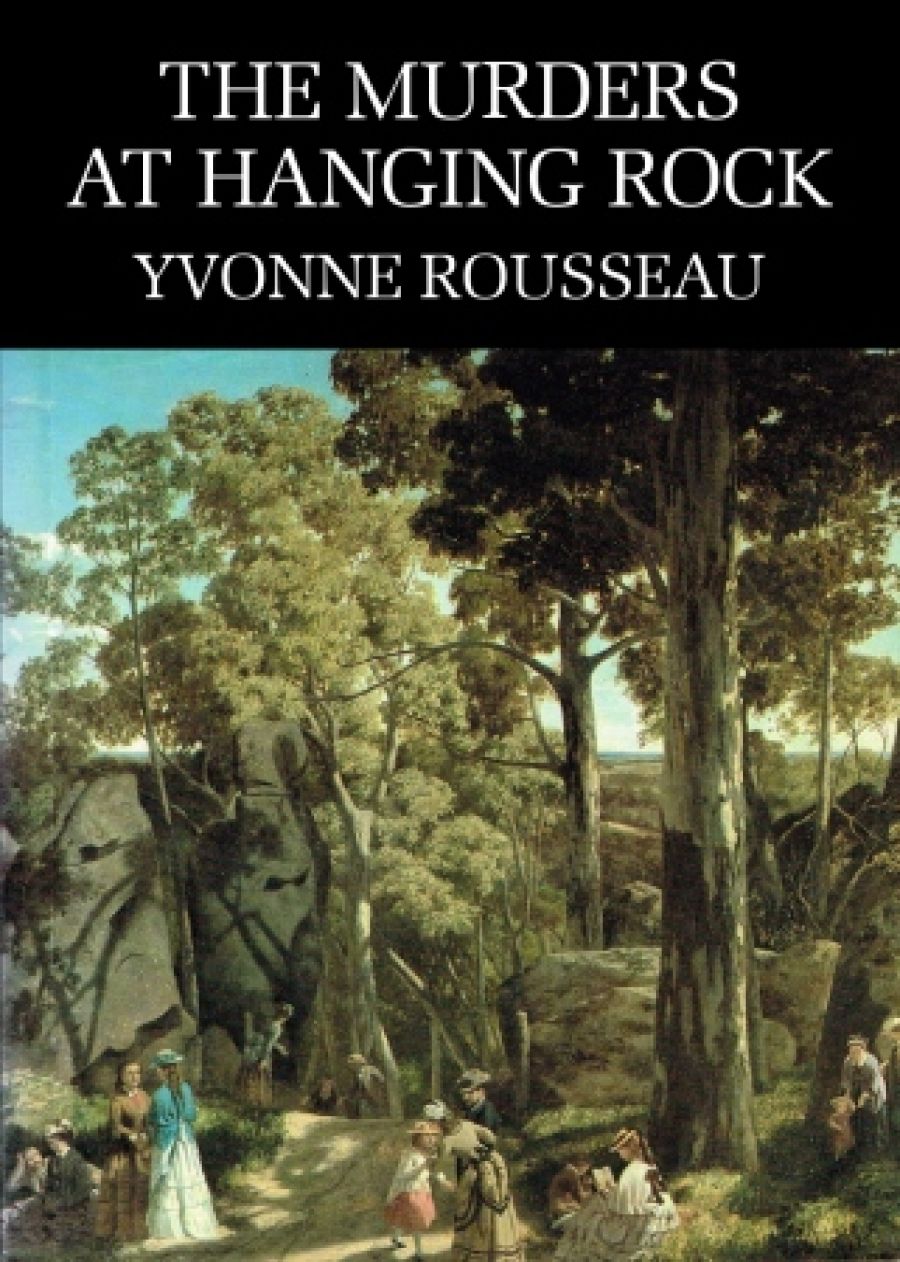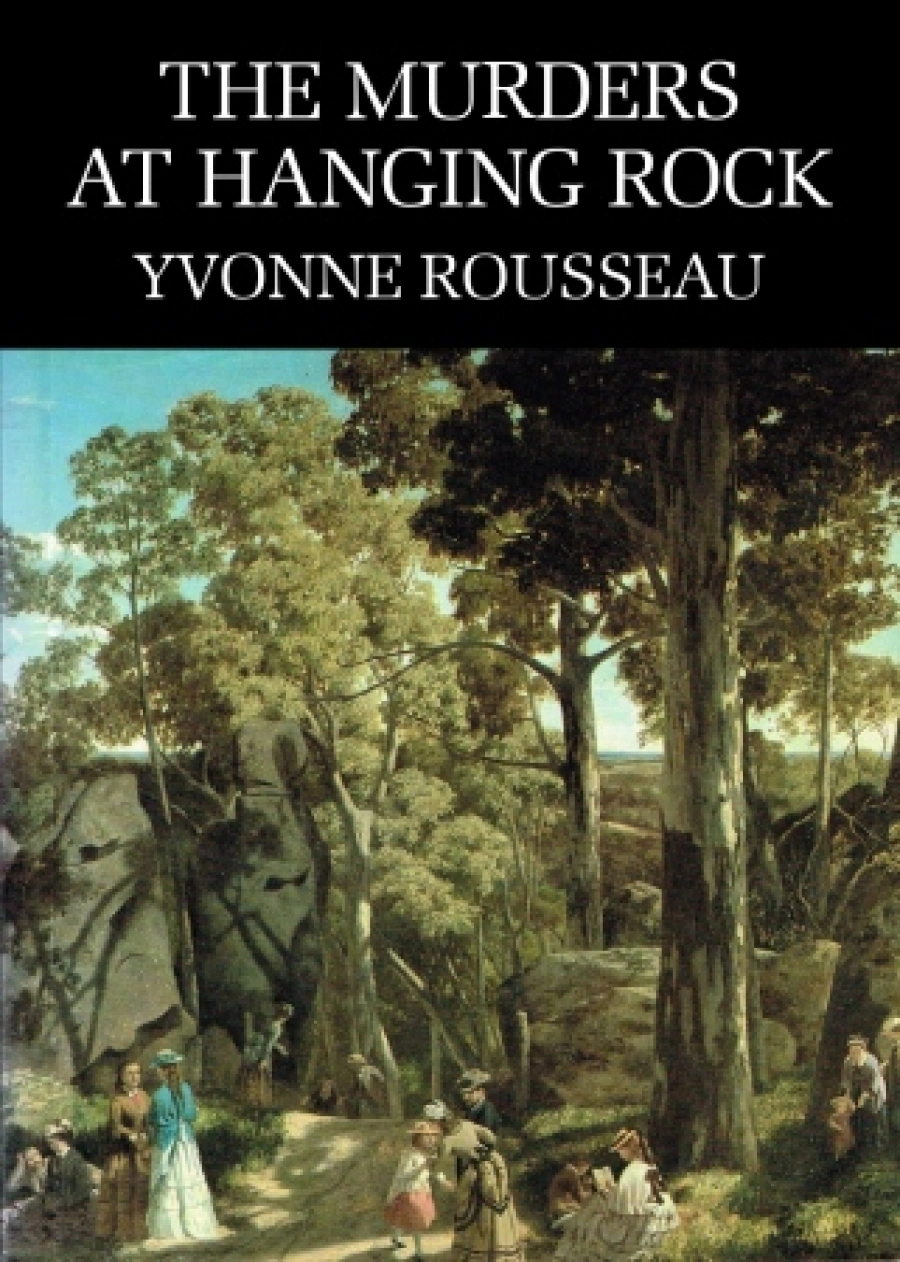
- Free Article: No
- Review Article: Yes
- Article Title: The Unexplained and Inexplicable
- Online Only: No
- Custom Highlight Text:
Since its publication in 1967, Joan Lindsay’s Picnic at Hanging Rock has exercised a peculiar fascination over Australian readers. Its tale of the unexplained and apparently inexplicable disappearance of three schoolgirls and a teacher from an expedition to the Rock is so well known that it scarcely needs further elaboration. Interest and sales were boosted by Peter Weir’s 1975 film. With its lyrical progression of girls in white dresses with blue satin sashes, which ushered in what we like to think of as the rebirth of the Australian cinema, or at least its serious appraisal by the rest of the world.
- Book 1 Title: The Murders at Hanging Rock
- Book 1 Biblio: Scribe, $7.95 pb, 192 pp
- Book 1 Cover Small (400 x 600):

- Book 1 Cover (800 x 1200):

An air of respect, almost reverence, seems to enter into discussion of both book and film. There seem to be two equally solemn schools of thought. One claims that the mystery remains a mystery, although its deeper reverberations can be intuited by the sensitive in spirit – the other, that a rational explanation of the events can be reached by a penetration of the enigmatic surface of the novel to the truth lurking beneath. There is a curious blurring of the distinction between fact and fiction here, which has led to a preoccupation with settling the question ‘What Really Happened at Hanging Rock’, as if the fiction were a verifiable truth.
Melbourne author Yvonne Rousseau has taken up and pursued a number of these ‘solutions’ to the mystery with a sleuth’s zeal and an ironist’s turn of phrase. Her book The Murders at Hanging Rock, offers, as she says in her introduction, ‘four quite lengthy explanations of what happened, each explanation being quite coherent and comprehensive, each being presented with the utmost enthusiasm and desire to convince – and each contradicting the others’.
Her tongue-in-cheek approach is apparent from the outset, in her dedication to those readers who are ‘the serious lovers of Nonsense itself’. Four is in fact a conservative estimate. She offers a dazzling catalogue of theories, but without the slightest desire to convince us of the merits of one above another, and a keen eye for the ridiculous in them all. Her interest is not in solving the riddle of the book, but in exposing the fallacies in readings which pick up certain incidents or suggestions in the book and use them as outright proofs of preconceived theories of time, space or the existence of UFOs. What emerges is a delightful parody of rigid literary and philosophical systematizing and a rather deft demystification of the book’s status as a classic.
She demonstrates, for example, how what one presumes to be an error of Lindsay’s can, in the hands of an over-zealous reader, become a piece of evidence. Thus:
... the reader must look again at statements like this: ‘Miranda’s tennis raquet still leaned against the wall, exactly as it did when its owner, flushed and radiant came running upstairs after a game with Marion on a summer’s evening. There are three explanations of the raquet’s being there before Miranda has come up the stairs: the first is that she has been playing another, raquetless sort of game with Marion; the second, that she prefers to replace her raquet by psychokinesis (another skill perhaps cultivated in her universe, though mistrusted in ours); the third, that the other universe is like Lewis Carroll’s Looking Glass Land where the White Queen remembers things, and copes with their consequences, before they have actually happened.
i.e. Miranda and her friends, so this argument goes, have disappeared into a kind of parallel universe, of whose existence the book gives as a series of covert signals.
This may seem a trivial point to single out, but her analysis throughout is exacting without being petty. It is perhaps worth asking how far one can discuss a book in this way, in terms of the response it has provoked. (Most of the theories Rousseau deals with have actually been expressed, in less documented form, elsewhere.) But Rousseau often suggests that the nature of the work invites, indeed encourages, a fairly woolly-minded speculation from its readers.
In any case, her playful expositions display a delightful command of irony and its modes. Her final offering (the possibility that young Michael Fitzhubert and Albert the coachman might have been a grisly pair of homicidal maniacs) is a delight, lovingly pursued with every absurd convention of the detective story genre of which she is obviously a connoisseur.


Comments powered by CComment